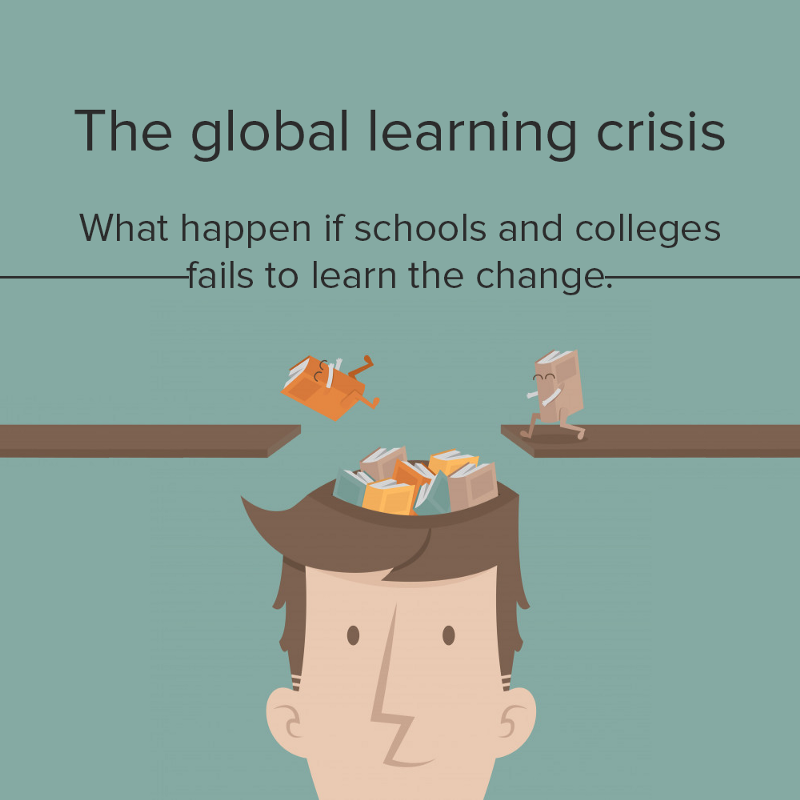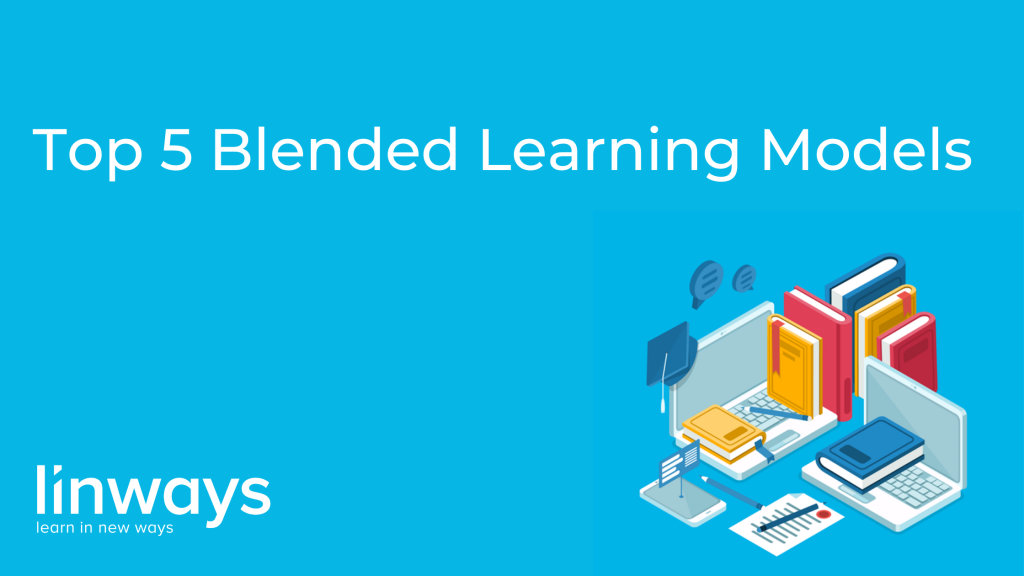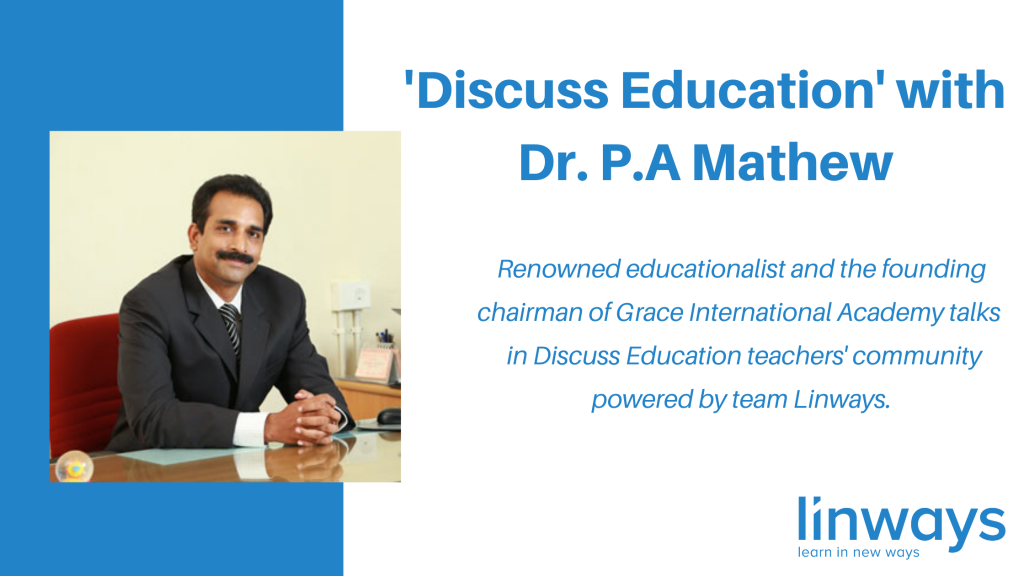“This learning crisis is a moral and economic crisis,”
— World Bank Group President Jim Yong Kim

The global trends in education has experienced a shift in its approach for the past few centuries. And it’s not a good one. Though the number of students attending school and the total number of literates has spiked, there are concerns that the schooling doesn’t always offer a supportive environment for learning anymore.
This is a global trend, and yet there are some regional, political, or cultural backgrounds common for this shift.
Experts speak of a global learning crisis. They say, by 2030, more than half of the children (around 330 million in today’s expect ) attending schools and colleges will be failing to learn. An alarming news if we actually knew what this means. It’s not as if the school-going population are on a decline. If anything, it’s actually on a steady increase. So what is this crisis they speak of?
Is it related to education? yes; but it’s not an education crisis. Instead it’s a learning crisis.
“Across the world, 200 million young people leave school without the skills they need to thrive plus an estimated 775 million adults — 64 percent of whom are women — still lack the most basic reading and writing skills.”
First of all, globalisation and outcome based education has helped us fix a few goals and targets for the educational process. This is both good and bad. When the outcomes helps us organise and raise the quality of education, these goals are not often founded of a knowledge based perspectives. They are skill based.
An international education committee brought together by a former UK prime minister and UN special envoy for global education Gordon Brown put forward an solution, which is rather superfluous than problem solving, for this crisis: They categorise countries based on income level and proposes countries to takes inspiration and direction from the fastest improving top 25% in their respective categories.
Very nice. Doesn’t work very well in the institutional level. Let’s take a look at three middle income countries who will belong to the same category in this proposal; India, Tunisia, and Vietnam. They all come under the same category and yet has entirely different problems when it comes to addressing this learning crisis. India experiences cultural and financial backdrops while Vietnam has issues related to expenditure in the area of education. Tunisia, though spends a similar amount, has a very noteworthy form of education. But according to a recent poll, only 66 percent of Tunisian students said they feel like they belong at school.
They are all on the same category and yet experience different problems. Also, these countries spends various amounts of their GDP on education. While Vietnam spends around 6.6 of it’s entire GDP on education, India invests 3.3 and Tunisia spends 6.2. Each countries will have their own national priorities and financial demographics. Nobody can pressure them to spend more or less on something. It is entirely up to them and this creates a problem. We can only suggest best practises and put forward proposals.
So we need to figure out a way to begin at the institutional level, with solutions that can be implemented and followed upon regardless to what the national statistics are.
Why access to classrooms is not enough
From years of our experiences, it is already established that exams doesn’t measure learning. So let’s skip that blame game and see what we can actually do to counter this learning crisis.
After a few months of research, we have zeroed down on a few steps we could all take on the institutional level to address this global learning crisis. Let’s take a look shall we.
The only solution to this issue is to shift our focus from schooling to learning. Taking in better assessment techniques and more quality based metrics to quantify how many are actually learning instead of how many are in the class and how many pass the exams.
Creating a learning environment is the key for all changes to become effective.
‘Learning environment refers to the diverse physical locations, contexts, and cultures in which students learn. Since students may learn in a wide variety of settings, such as outside-of-school locations and outdoor environments, the term is often used as a more accurate or preferred alternative to classroom, which has more limited and traditional connotations — a room with rows of desks and a chalkboard, for example.
The term also encompasses the culture of a school or class — its presiding ethos and characteristics, including how individuals interact with and treat one another — as well as the ways in which teachers may organise an educational setting to facilitate learning…..’
How does this manifests in educational institutions
The learning environment plays a huge role in a child’s education. Our brains constantly filter the external stimuli and information that is being received each second. And this causes a sort of sphere inside which the student is and everything beyond it has to imply itself important in order to get to the student. So in a manner, the classroom environment has to be this carefully designed workspace that supports learning and creativity and curiosity. It should expand the ‘sphere’ so to put.
Think of all the innovations and shifts that has happened in the last 10–15 years. There are tons of new information sources out there on the internet including the youtube and wiki. There are hundreds of MOOC’s and certificate offering programs that provides you the same skill assurance and knowledge as a high school degree! The relevance that is still there to the conventional institutional setup is because it still focus fully on formal education and a firm learning environment. This was enough till yesterday. But as the demographics and socio-cultural interests of the learners change, the institutions will have to adapt to survive tomorrow.
Offering a choice-based, learner-centric education will be crucial elements for the sustenance to educational quality in the future. And the as far as the trend goes, educational quality will play a major role while the students and parents choose institutions.
All these loosely translates into the inevitable. The time and place where institutions has to constantly adapt and optimise their learning environments in order to meet the learner’s demands and expectations. This also would put educational institutions in a place where this adaptation becomes a crucial factor for their survival. Any institution in the future that does not meets the demand of the learners may fade out into oblivion.
How institutions can tweak their workflow and environments to manage and effectively counter this crisis.
One major thing the institutions can take advantage of is the technology. There are all kinds to learning and institution managements tools out there which you can use. They assure quality and optimisations in workflows. Technology assisted education is the future, and it’s early adopters will thrive when the advocates of conventional inefficient educational process perishes. Universities and institutions around the world are putting great effort into finding the right technology for education.
To attract students of tomorrow, the institutions need to project futuristic education with better technology. Students and parents are becoming more aware on outdated curriculum and teaching-learning methods. They choose institutions which can offer education that helps students to survive in the world outside. A world that is heavily dependent on technology and keeps on getting updated every few years.
We all use smartphones, tablets, PCs, and advanced data sharing application everyday as if they were not even that advanced anymore. So why should a student or parent choose your institution which still use seriously outdated methods over some other college which uses advanced technology like an AMS to support education?
Also, re-designing the classrooms can be very effective too. There are many ways to do this. You could begin from the scratch and build a whole new learning environment, or you could rearrange the existing elements to make learning more fun and effective. This could also help you prioritise your goals to a great extend. Regardless of all the shortcomings of the outcome-based education, it is still a great way to teach and learn. It is well recommended by various experts and education communities.
Let’s take a look at a regular classroom and see how we can rearrange it to host a more learning-supportive atmosphere.
- Begin from the seating arrangements. Altering the seating can trigger freshness and excitement. Grouping students in different ways to assist codependent learning can be also effective. There is usually a front of the room that everyone is facing. So naturally, there is a back of the room and this makes it more difficult to engage the whole audience. Teacher know what I am talking about. If the teacher can move the seating and also keep the work surface in front, all the 4 walls come into play and the classroom becomes much more interactive.
- Learning theories are more simpler and easy to implement than you think. There are countless learning theories out there waiting to be explored. We have already published blogs on many of them. You could check them out here. On the contrary to the popular belief, most of them are easy to master and can be effortlessly implemented in classrooms. This gives a sense of seriousness and purpose to the education you provide. They are a great way to tell students and parents they your institution care about learning and you are serious about this.
- As we mentioned, technology. The tool for the century is under consistent development and can be tapped for all kinds of purposes. There are academic management systems, learning softwares, media sharing tools, and even the power of the whole internet. And they can all be brought to your classroom. When properly managed, technology can perform miracles. It can reduce the workload, manage goals and tasks, and even automate many mundane and boring works.
- The institutions, whether it be a school, college, or a university is a community, effective communication is key. The interactions between the management, teachers, students, and the parents are very important. Reinvent new ways to these communications and much of the hurdles vanish right away. Progress updates for parents, workflow and achievement updates for the teachers, management and data updates for the institutional management, and goals and curriculum updates for the students are the prescribed norms for a ideal institution.
The areas of psychology directly related to the classroom environments are of environmental, engineering, social, and educational. The researches done on these over the past few decades has results that directly correlates to the conventional classroom environments; such as the lighting, space, noise etc. Presumably, these factors contributes to an extend into the learning and cognitive capabilities of the learners and teachers. Adequate lighting, preferable temperatures, absence of noise and other distractions etc. are some of them.
Other results, however, reflect the often complex, subtle, and surprising interplay between the learner and the learning environment. Like the flow of information, classroom connections and bonds, retaining focus, physical and mental exhaustion from monotonous stimuli etc.
Conversely, environments that elicit positive emotional responses may lead not only to enhanced learning but also to a powerful, emotional attachment to that space. It may become a place where students love to learn, a place they seek out when they wish to learn, and a place they remember fondly when they reflect on their learning experiences. In higher education, we should hope to provide such places for our students to learn, even as we build yet another large lecture hall and attempt to squeeze our students into crowded, noisy, and uncomfortable spaces. Clearly, some learning environments are more comfortable and offer fewer distractions than others. In any learning environment, physical characteristics that cause discomfort can be expected to interfere with learning; environments that produce positive emotional states can be expected to facilitate learning and the development of place attachment.
We here at Linways are always trying to learn more about the learning and academic environments. We study the problems the learners and educators face and research on how to solve them efficiently. We firmly believe that with the right approach and mindset, we can tackle this global learning crisis by building better learning environments in our classrooms and institutions that supports quality education and curiosity in learning.




